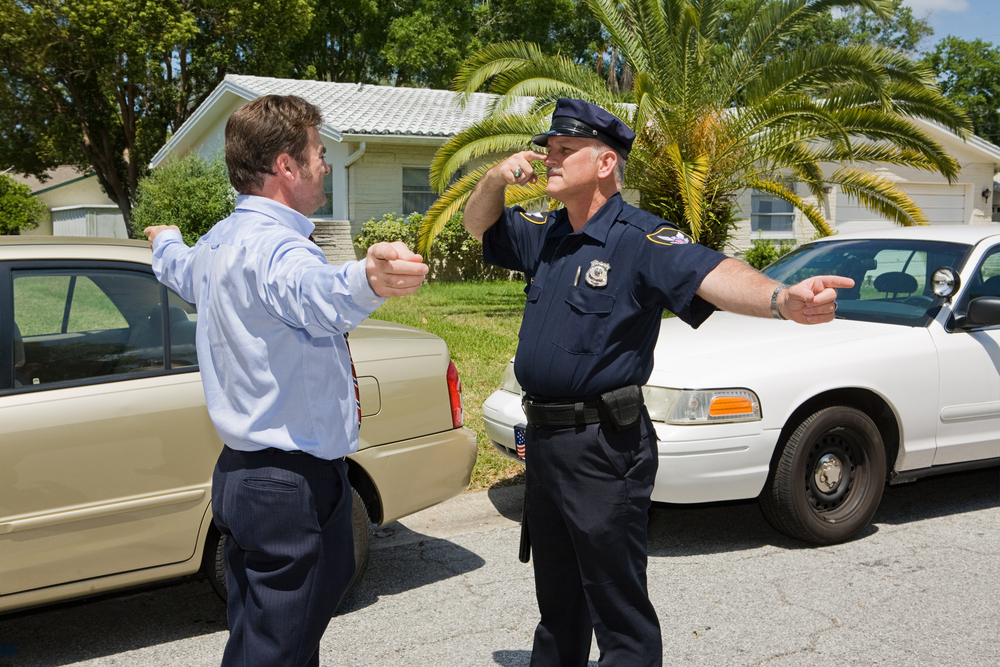Drivers have a limited right to refuse a chemical intoxication test. A refusal to submit to a Breathalyzer is admissible in court. That fact, along with the threat of lengthy license suspension, often convinces the driver to provide breath samples. A Kona DUI lawyer can reduce or eliminate both these effects, but that’s the subject of another blog.
On the other hand, drivers have an absolute right to refuse Field Sobriety Tests (FSTs). The Fifth Amendment gives defendants the right to remain silent. That includes the right to perform most activities, like field sobriety tests.
This right is critical in DUI cases. Officers must have probable cause to administer Breathalyzer tests, and typically, the FSTs furnish that probable cause. Furthermore, in chemical test refusal cases, the FSTs usually provide most or all of the evidence of intoxication.
So, in both test and refusal matters, attacking the FST results is a critical part of a Kona DUI lawyer’s approach to these cases.
Finger-to-Nose Test in DUI Cases
On the witness stand, officers say this test measures balance. Drivers must stand with their arms extended and alternatively touch their index fingertips to their noses. During the test, officers deduct points if the driver sways or does not touch a finger to nose.
The real purpose of this test is to fatigue the defendant. Test results are usually either highly questionable or entirely inadmissible because this test is not in the three-test National Highway Traffic Safety Administration battery.
Romberg Balance Test
German neurologist Moritz Romberg, who obviously had lots of free time, invented this balancing test in the 19th century. Test subjects must stand with their heads back and eyes closed. According to Romberg and other test advocates, this position deprives the test subject of all three ways to maintain balance, which are:
- Vestibular function (knowing the position of one’s head),
- Vision, and
- Proprioception (knowing one’s body position in space).
Because of that three-pronged deprival, intoxicated individuals should almost literally fall over drunk during the Romberg test.
This test has no scientific basis, and for that reason, judges often exclude it at trial. However, for strategic reasons, a Kona DUI lawyer often allows officers to testify about the Romberg test. If they cannot explain abstruse principles like proprioception and vestibular function, which is usually the case, some jurors may think the officer was not qualified to administer the FSTs or interpret their results.
Horizontal Gaze Nystagmus to Nail DUI
The DUI eye test is the first FST in the three-test NHTSA battery. It is also the most controversial of the three.
Nystagmus is a vision disorder which is also called the lazy eye. Nystagmus causes involuntary pupil movements at certain viewing angles. Alcohol causes nystagmus, but it is not the only cause. In fact, it is not even the leading cause of nystagmus. A childhood brain injury or a genetic defect causes many more nystagmus cases than alcohol.
Additionally, there are also issues with test conditions. The HGN test is usually accurate if administered under controlled conditions, but roadside HGN tests do not occur under controlled conditions. The sky is dark, overhead squad car lights flash in the distance, and cars whiz past with their headlights on.
Heel-to-Toe Walk
The HTW, which is also known as the Walk and Turn or the walking-a-straight-line test, is probably the most reliable of all FSTs. It is a divided attention test which measures physical dexterity and mental acuity. Defendants must walk a straight line forward and backward, walking the only heel to toe. During the test, officers look for intoxication includes, which include:
- Beginning the test before the officer says “start,”
- Leading with the wrong foot,
- Failure to walk heel to toe on any step,
- Using arms for balance,
- Moving off the line,
- Unsteady balance, and
- Ending the test before the officer says “stop.”
It is almost impossible to successfully complete the HTW while wearing flip-flops, cowboy boots, or anything other than athletic shoes. It’s even more difficult to pass this test if the officer requires the defendant to walk an imaginary line instead of an actual line.
Additionally, in court, Hawaii County prosecutors must establish that the defendant failed the test because s/he was intoxicated, and not because s/he was tired, nervous, disabled, or clumsy.
One Leg Stand to Establish DUI
In many ways, the OLS is a lot like the HTW. They are both divided attention tests. And, they are both controversial.
Many officers focus on minor technicalities when they evaluate the OLS. For example, they may testify that the defendant “failed” the test if he elevated the wrong leg, even if he performed everything else perfectly.
Jurors look at video footage of these tests and decide for themselves if the defendant passed or failed them. And, the jury’s opinion is the only one that counts.
Tests for Highly Intoxicated DUI
Highly intoxicated DUI requires prosecutors to prove that the defendant’s blood alcohol exceeds the legal limit by a specified large margin of .15 grams per 100 milliliters of blood or .15 grams per 210 liters of breath.
Establishing these levels requires a chemical test. Often, defense attorneys can establish that the tests were improperly administered or are inherently unreliable, resulting in reduced charges or dismissal.
If convicted of highly intoxicated DUI, defendants face at least 48-hours in jail and a six- to 18-month license revocation. Repeat offenders must spend 10 days in jail and lose their licenses for 12 to 18 months.
Contact an Assertive Kone DUI Attorney
DUI FSTs are by no means conclusive evidence of guilt. For a confidential consultation with an experienced Kona DUI lawyer, contact Olson & Sons, L.C. We routinely handle matters in Hawaii County and nearby jurisdictions.




